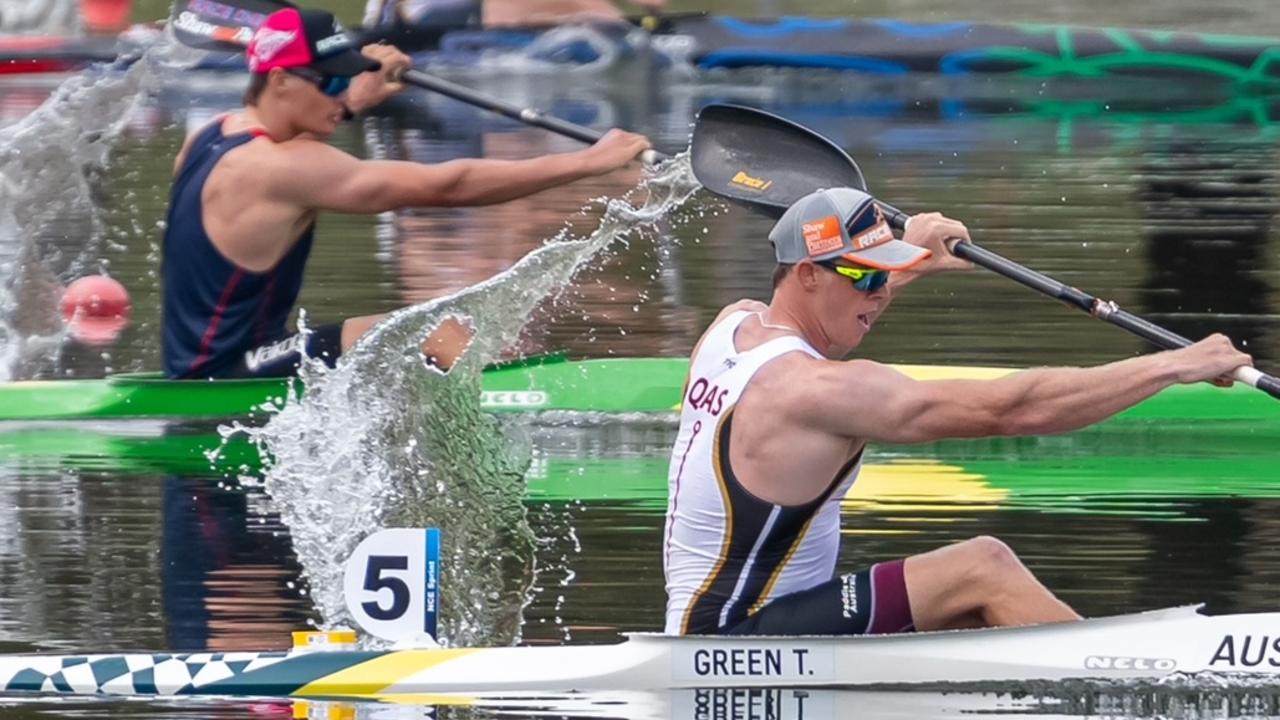Newport Beach has had four rock pools at four different places
Almost every ocean beach between Manly and Palm Beach has a rock pool – and some of the longer beaches have one at each end – but only Newport Beach has had four rocks pools at four different locations.
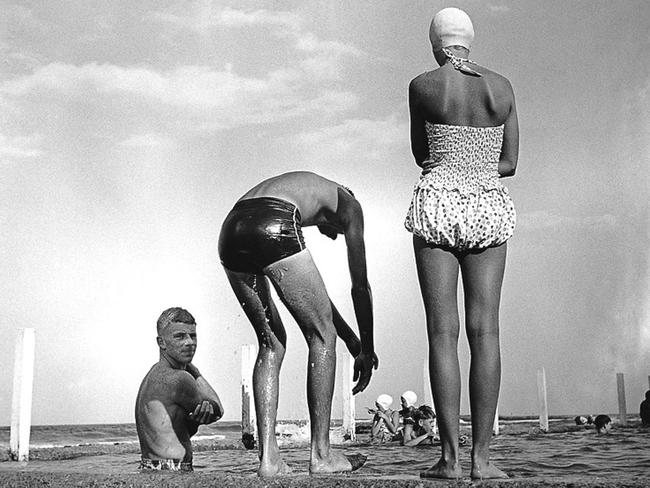
Manly
Don't miss out on the headlines from Manly. Followed categories will be added to My News.
Almost every ocean beach between Manly and Palm Beach has a rock pool – and some of the longer beaches have one at each end – but only Newport Beach has had four rocks pools at four different locations.
The first rock pool at Newport was at the northern end of the beach, just north of the beach proper.
In August 1917 the Lands Department granted Warringah Council permissive occupancy of a site at Newport for a public pool but it was not until 1919 that the pool was created by Warringah Council following agitation by local residents and the Newport Surf Life Saving Club.
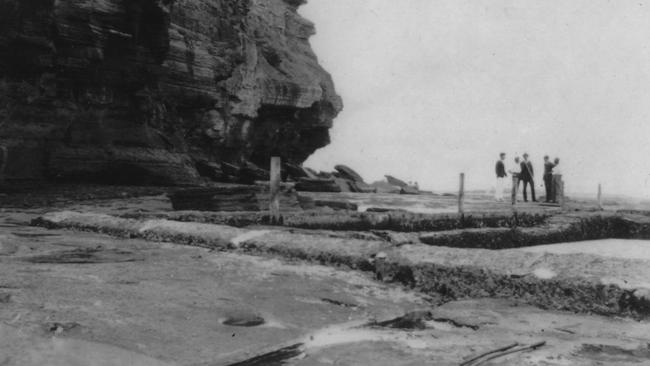
Newport resident and surf club member A. M. Moss initially offered £20 – later increased to £40 – to help pay for the work, although it’s not known whether the money came solely from Mr Moss’s pocket or was boosted by contributions from other local residents.
The pool was partly excavated from the rock shelf, possibly where there was already a natural depression, and low concrete walls were built on all four sides to effectively deepen the pool, which was about 10m by 8m.
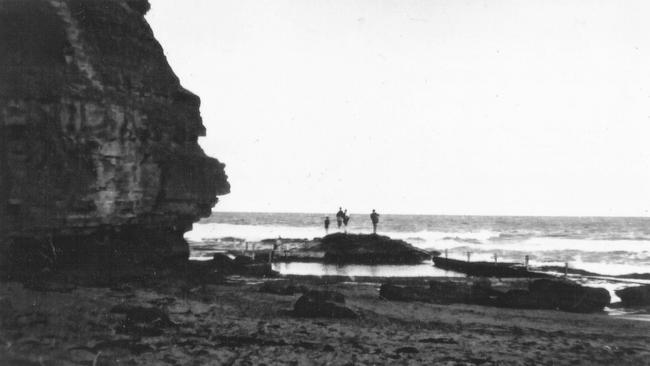
There were several timber posts embedded in some of the low concrete walls and there may have been ropes or chains linking the posts to act as handrails.
As well as being small and shallow, the first rock pool was potentially dangerous to users because it was close to an unstable cliff from which loose rocks could fall without warning on to anyone near the pool.
In late 1919, Newport SLSC asked Warringah Council to make improvements to the pool but what those improvements were is not unknown, although one request was for the rough bottom of the pool to be smoothed.
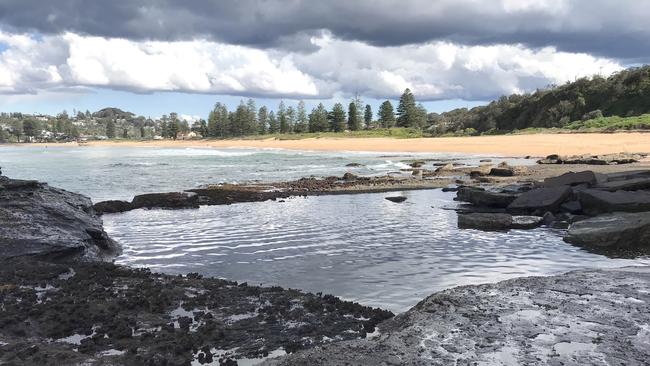
In 1920, the council also considered building a dressing shed near the pool but nothing appears to have come of the idea.
In early 1923 Newport resident Eric Isley told the council that local residents wanted dressing sheds and toilets erected on the beach adjacent to the rock pool but nothing came of the request.
But the ever-present danger from falling rocks near the pool led the Newport Progress Association in early 1924 to ask Warringah Council to close the pool immediately and to build a new pool on the rock shelf at the southern end of Newport Beach.
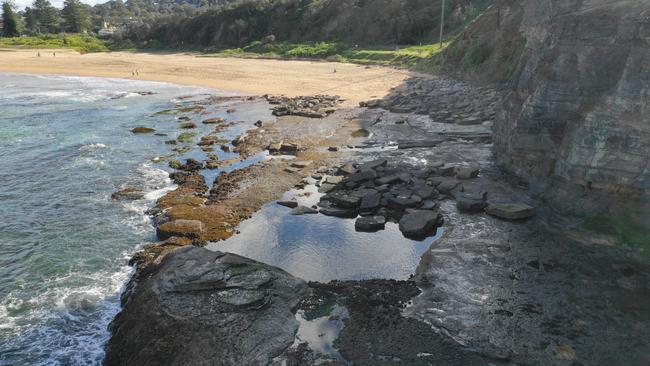
The progress association even wanted a fence built around the first rock pool to prevent people using it, such was the perceived danger.
The council agreed that a new rock pool at the southern end of the beach would be safer than the old one and asked the council’s engineer to investigate various locations.
But a sticking point was finance.
The Newport Progress Association wanted the council to pay at least half the cost of building the new pool but the council was opposed to doing so.
By late 1924, the council and the progress association had agreed on a site for the new rock pool on the rock shelf at the southern end of Newport – immediately inshore from Little Reef.
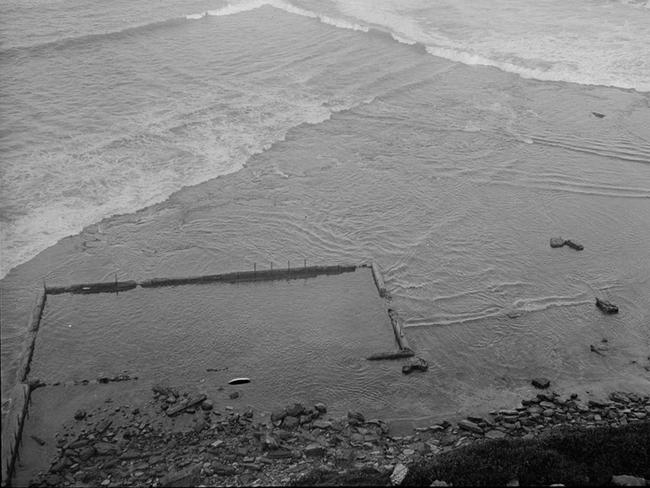
At the time, parts of the southern end of Newport Beach were still in private ownership – a situation that wouldn’t be rectified until 1927 – and some of the landowners weren’t keen on people walking across their properties to access the proposed new pool, so they opposed its construction.
Knowing the private properties would soon be resumed, the council brushed aside such concerns and in early 1925 called for tenders to build the new pool.
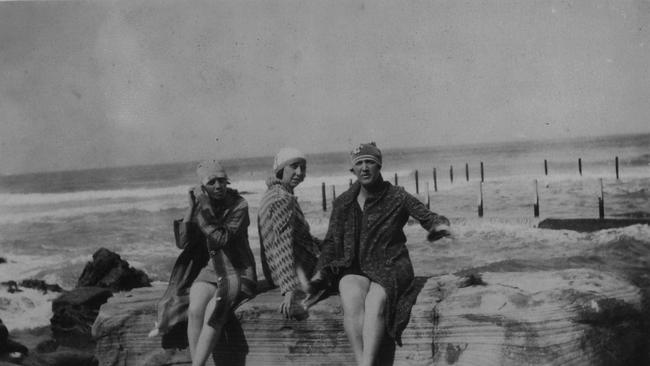
In April 1925, the council accepted the tender of N. J. Douglas for £394 to build the new rock pool but the following month Douglas withdrew his tender, forcing the council to seek new tenders.
Three new tenders were received and the lowest, that of T. Birmingham for £534.13.0, was accepted.
The finished pool was 37 yards (34m) long, 17 yards (15m) wide and 3’6” (1m) deep, and was officially opened on January 30, 1926.
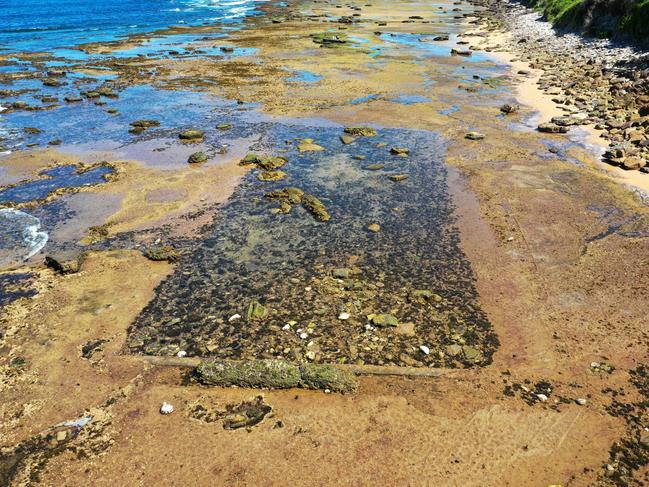
NSW Chief Secretary Carlo Lazzarini performed the official opening in front of members of Warringah Council, Newport Amateur Swimming Club and the Newport Progress Association, after which a swimming carnival was held to help raise money to pay off the cost of building the pool, which ended up costing £560, of which Warringah Council contributed £310.
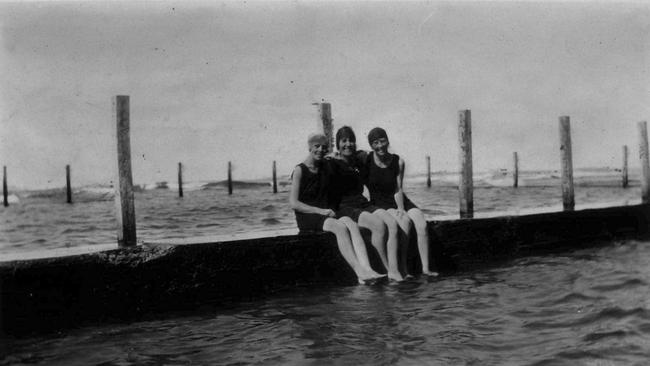
The pool was partly excavated from the rock shelf and partly comprised of concrete walls built on all four sides of the excavated area, with timber posts and chains creating a handrail on the eastern side and a raised concrete walkway from the north-western corner of the pool back towards the base of the cliff.
Due to its unusual length, a series of 37-yard and 74-yard races were then held and two female swimming champions, sisters Mattie and Ettie Mealing, gave exhibition swims.
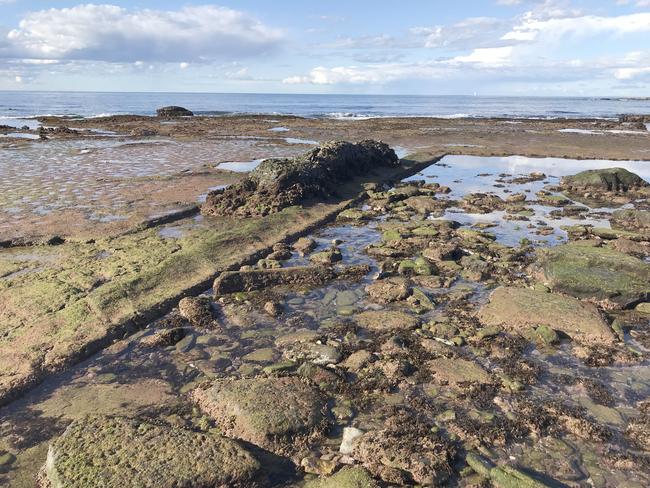
Even before the new rock pool was opened, locals began lobbying Warringah Council to build another pool on the rock shelf between Newport and Bilgola beaches.
One of the lobbyists was Hanah MacLauran, of Bilgola Beach, who offered to donate £25 towards the cost of a new pool, and another was F. G. Pratten, who offered to collect contributions towards the cost and urged the council to contribute half the cost.
In response, the council said it would contribute up to £150 once the money was available and once the local residents had contributed their £150.
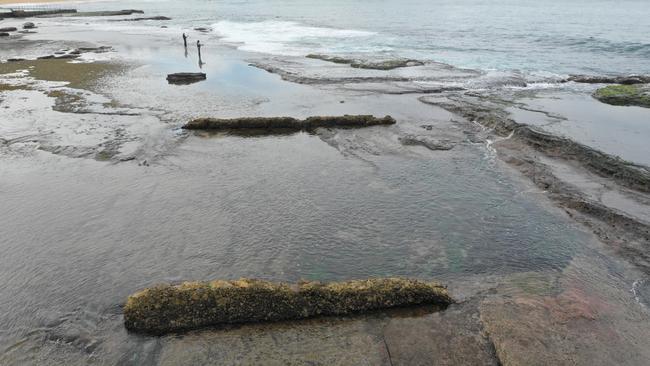
By April 1926, Mrs MacLauran and Mr Pratten were able to guarantee their share of the cost of the new pool, so in May the council sought tenders for its construction.
All the while, the Newport Progress Association was appealing to the council to build a seawall along the southern part of the beach and a footpath to the new rock pool inshore from Crosswaves, along with dressing sheds near that pool.
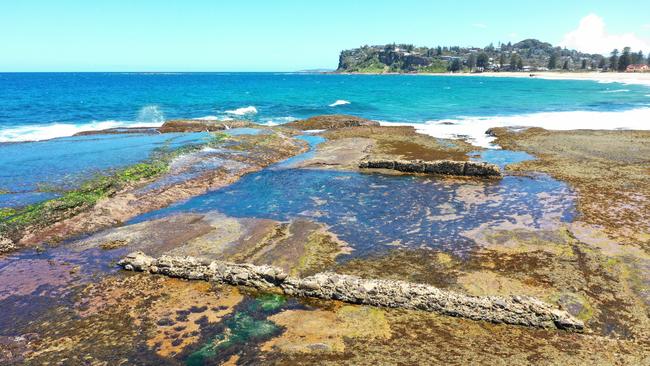
By September 1926, construction had begun on the new pool on the rock shelf between Newport and Bilgola beaches – and not a moment too soon.
The pool built on the rock shelf at the southern end of the beach was poorly built – although the walls of the pool were up to 1m thick, there was too much aggregate and not enough cement in the concrete and there were no steel reinforcement rods.
To make things worse, the aggregate had rounded surfaces, so they didn’t provide much “bite” for the cement to act on.
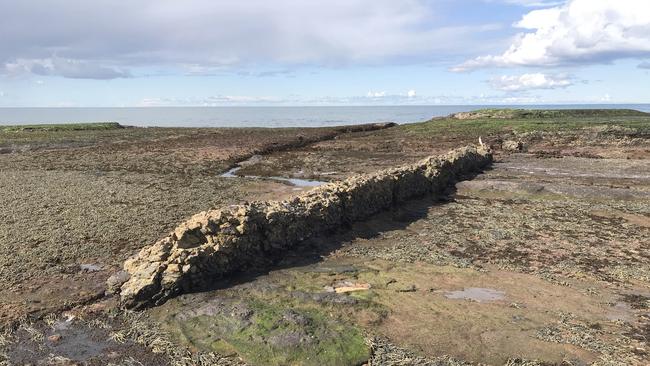
Within a year of its construction, the eastern wall of the rock pool had been broken by the waves, which continued to pound the pool in its exposed location.
By the middle of 1927, the new pool on the rock shelf at the northern end of Newport Beach was completed.
The new pool – the third pool at Newport – was built better than the second one, with more cement in the concrete, aggregate with shaper edges to provide more bite, and steel reinforcing rods.
The new pool had concrete walls on its northern, western and southern sides, while a rise in the rock shelf was taken advantage of to be the wall on the eastern side of the pool.
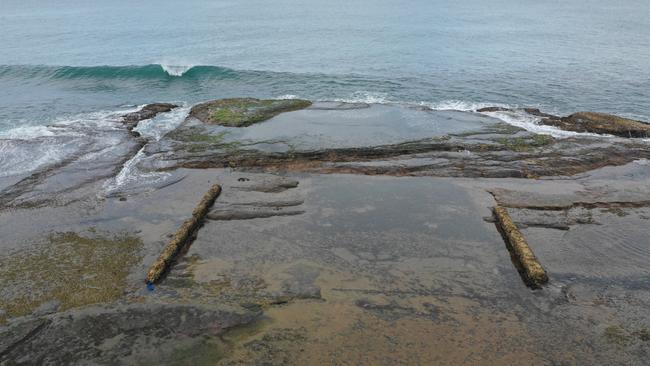
The new pool, the cost of which is unknown, was 25m long and 22m wide and had timber posts at each end to support railings.
Newport now had three rock pools – the small, shallow one immediately north of the beach, a large pool on the rock shelf at the southern end of the beach and now another large pool on the rock shelf at the northern end of the beach, although the deteriorating condition of the pool at the southern end of the beach was an ongoing headache for the council.
And locals were now lobbying the council to improve access to both large pools – the one at the northern end and the one at the southern end – with access to the northern one problematic due to swimmers having to walk close to the unstable cliff.
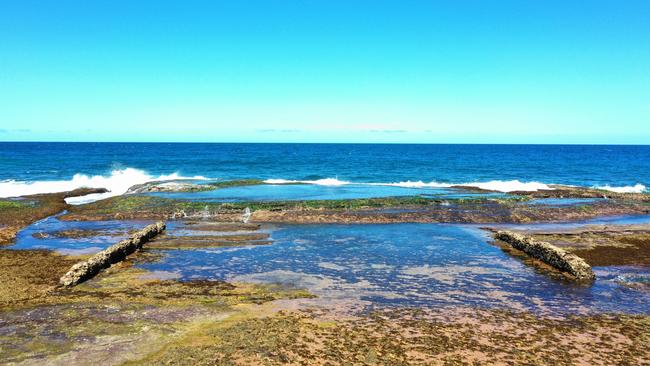
But the cliff at the southern end of the beach was also unstable, as a man found out in August 1930, when rocks weighing more than 50 tonnes fell away from the cliff and crashed to the bottom.
Thankfully the man, Chris Kearney, of South Kensington, was inside a concrete dressing shed near the pool that the council had recently built and which shielded Kearney from the small landslide.
Kerney told a Sydney newspaper that he was preparing to enter the pool when he heard a roar, followed by terrific crashes.
“Afraid of being crushed if he attempted to run, he crouched against a wall while big boulders, some weighing half a hundredweight, fell into the enclosure.
“He was knocked from his position by the shock of the main fall and, as soon as the danger was past, he scrambled out and hurried to a house.”
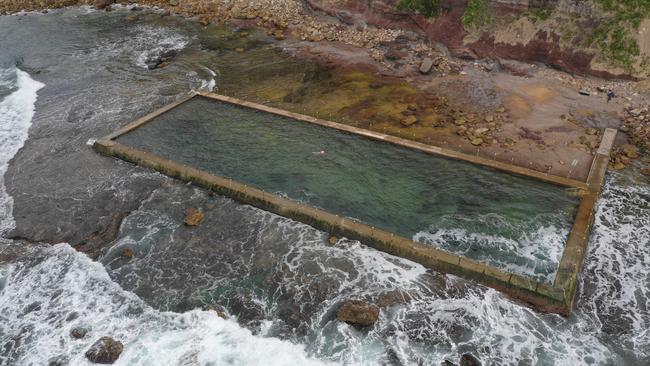
The Newport Progress Association had paid half the cost of building the dressing sheds.
In October 1930, the Newport Progress Association contributed £70 – half the cost – for repairs to the rock pool at the southern end of the beach.
But no amount of money was going to save the southern rock pool from deteriorating further but the worsening financial conditions as the Depression hit home made the cost of repairing the pool harder to justify.
By 1935 the condition of the pool on the rock shelf at the northern end of the beach was also deteriorating, due in part to its construction and in part to its exposed location, so plans were made for yet another pool at Newport.
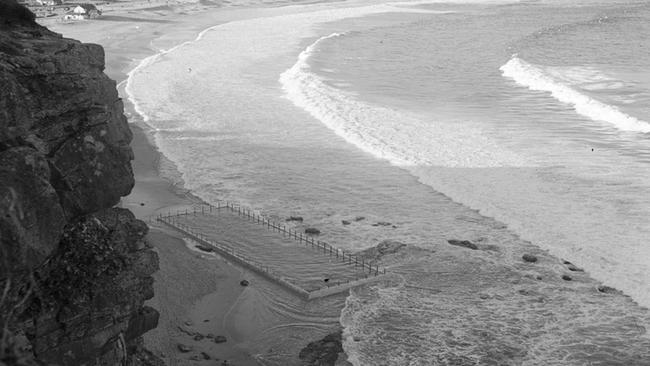
The site chosen was on the rock shelf at the southern end of the beach about 200m north of the other pool on that rock shelf.
Mr A. M. Moss, who had contributed £40 towards the cost of building the first rock pool, stepped forward to offer a loan of £500 to the council to build Newport’s fourth rock pool.
The council jumped at the chance and by May 1935 plans were well in hand and by September that year the pool was finished, much to the satisfaction of the Newport Beach Improvement Committee, which had been formed two years earlier.
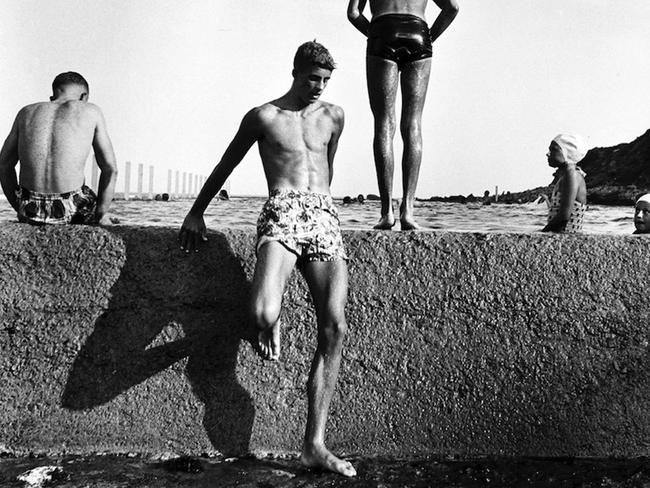
Although there is a release valve to empty the pool, there is no pump to pump water into the pool, unlike many of the rock pools on the northern beaches, so the pool is filled by wave action.
The new pool measured 53m by 16m, had a natural rock bottom and concrete walls.
Newport now had four rock pools, although the condition of some of them was by now dubious.
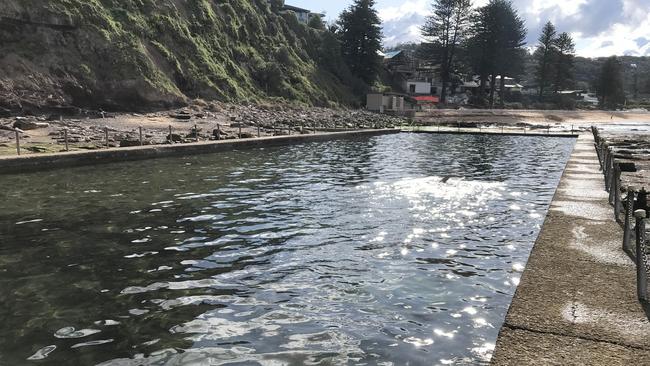
Since then, the low concrete walls around the first pool at Newport, the one closest to the northern end of the beach, have been washed away and the pool has filled with loose stones that have fallen from the nearby cliff.
All that remains of the poorly-constructed second pool, the one built immediately inshore from Crosswaves, is part of one of the four walls and the excavated section of the rock shelf.
Much more remains of the third pool at Newport, the one built halfway between Newport and Bilgola beaches, despite its equally exposed location, an indication of its superior construction.
The fourth pool at Newport, the second one built south of the beach, is in good condition thanks to regular maintenance by Northern Beaches Council.

